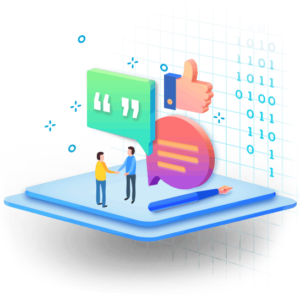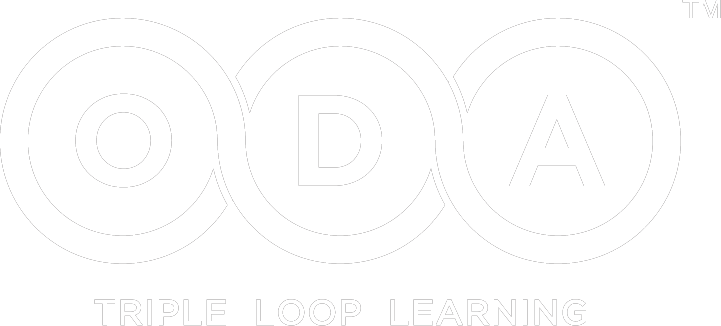- Home
- newsletter#2
- Why Design Thinking is not just about process but mindsets? Are these mindsets disrupting HR?
newsletter#2
For almost a decade now we have talked about augmented change. More than any other factor that is creating this change is, the pace of change in technology, the economy, and society which is reshaping the future of work, worker, and the workplace. And while most leaders have been pondering over the effects of this accelerated change in the organization, the actual transformation has been rather slow.
But that was until now. What the future of work needs is to work on restructuring workplaces, redefining roles, agile learning, and abundance of trust—and it does, organizations are being challenged to do all that and much more as they combat with this deadly pandemic. Also, while we have been long talking of VUCA (volatile, uncertain, complex, and ambiguous) environments, we are undoubtedly and finally facing one. And like people put it now it the E-VUCA world.
As HR Practitioners, the complications we have had to confront in the past year has become more and more complex. While we try to dwell deeper to understand the nature of these problems and how our practices, approaches and ways of thinking can help us resolve them in a creative more human-centric way. So, are there enough methodologies or frameworks that can be used as enablers rather than constrain innovation.
So, Design Thinking when linked to Human Resources is a concept that we will see much in the future, some organizations have already begun to apply it very successfully.
So, while I would not like to dwell too much into what is Design thinking as you will find it on Wikipedia and several other articles, whitepapers and of course IDEO’s well explained concept of Design Thinking.
What really is Design Thinking?
Design Thinking refers to the cognitive, strategic, and practical processes by which one design concepts. This concept was most commonly used and came from academia across different design domains of different design cognition and design activity. But in essence it comes down to this one thing that is Design Thinking is both an ideology or a mindset and a process to solve complex problems in a highly human centred way.
As I already mentioned, Design Thinning can get quite academic and the reason could be its original idea comes from academia. Way back in the 1960’s institutes begun to understand how designer actually work. So, while they started to look at the concepts, and methods that could be used across all the studies there you see a pattern emerging that successful designer have a specific way of doing things. These concepts then got into focus when Tim Brown, IDEO Executive Chair made it popular in his book “Design for Change”.
Tim Brown redefined Design Thinking as a toolkit that can be used by people to design solutions that integrate the needs of people, technological integration, and the need for business success.
That means Design Thinking can be used by anyone who is trying to solve a problem. And therefore, it also puts it into the realm of HR. So, as I look at it design thinking is both a process and the mindset.
So, let’s explore the Mindset. How can one design employee experiences which will have the ability to empower critical thinking, innovation, and teamwork? It starts with Design Thinking as a Human Centred approach towards solving any problem.
So, when we say Human-centred we directly start with the person who has the problem. Employee experience is becoming much more important in the future. It’s about understanding your people at the core, write up their values set like how they will react in each situation deep down subconsciously is what one is after.
The other is that Design Thinking is a collaborative approach towards problem solving. We almost will never see a design thinker work alone. One will always need a team around you, not just to work together, but often also offer critique since one of the important elements of design thinking is that we give feedback.
The other mindset is that Design Thinking is all about being extremely Optimistic. We start off with a challenge not as a problem but as an opportunity to solve for. This mindset if targeted will help begin the innovation journey. A lot of research done into this optimistic mindset, that if one looks at things from the problem side your creativity actually halts, and if you look at it from a more optimistic opportunity side, one can become more creative.
The other is design thinking is the Iterative and Experimental approach. This would mean that you are able to work on the problem in short sprints and during each sprint one is able to experiment with the different solutions.
So, as we learn the different mindsets that needs to change – why is design thinking important to HR. So, as a research from Deloitte define it – “Design Thinking casts HR In a new role. It transforms HR from a “Process Developer” to an “Experience architect”. It will empower HR to reimagine every aspect of work; the physical environment; how people meet and interact; how managers spend time; and how companies select, train, engage, and evaluate people.
The other reason why one must use design thinking in HR is it increases operational effectiveness in the team. Also, research by IBM shows that’s when design thinking is adapted it increases go to market time twice as fast. The time taken to design an intervention, for example a change intervention is reduced by almost 75%. And actually, developing it further reduces by 33%.
What is important to understand is that employee experience is at the core of Design thinking. And, HR can do different things with that. HR can leverage Design Thinking, for example to restructure roles of the organization as part of its organizational design agenda. It can be used to make work easier more efficient, and more fulfilling, eventually making it more rewarding for the employees. It can also be used to design new self-directed learning experience like in case of Qualcomm who developed experiential learning programs that helped them build a culture of entrepreneurship, creativity and risk taking. Design thinking can be very apt as a lot is now focused on analytics and machine learning for HR and it fits in HR platforms to use data analysis in combination with Design thinking, to recommend better solutions directly to the employees using the different mindsets shifts.
Therefore, HR can lead towards creation of effective, efficient & content workplaces by adopting a human-centric, collaborative, optimistic and experimental mindset, giving employees the accessibility to right resources, and the right mindset approach and feel valued as they make meaningful contributions to the workplace. Further this offers great advantages in terms of attracting and retaining productive talent, building an all-inclusive workplace, and being placed to be an employer of choice.
So, its time to adopt and practice Design Thinking now!
Please click here to download the latest OD PUBLICATION.


